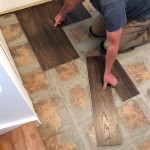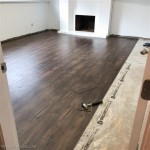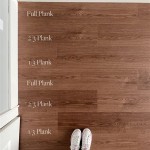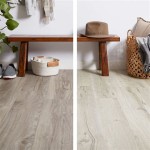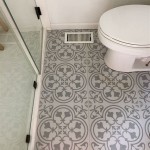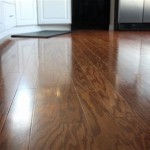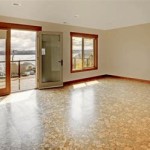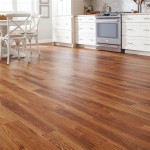How To Remove Masking Tape Residue From Hardwood Floors
Masking tape is a versatile tool often employed during painting projects or when protecting certain areas of hardwood floors from scratches or spills. However, the adhesive used in masking tape can sometimes leave behind a sticky residue upon removal, creating an unsightly and potentially damaging situation for hardwood flooring. Understanding the composition of this residue and the appropriate methods for removal is crucial for maintaining the integrity and appearance of hardwood floors.
The residue left by masking tape is primarily composed of the adhesive polymers used in its production. These polymers are designed to bond to surfaces with varying degrees of strength. Factors such as the type of adhesive, the duration the tape was adhered to the floor, temperature, and even the finish on the hardwood itself can impact the tenacity and difficulty of the residue removal. Allowing masking tape to remain on a surface for extended periods, particularly in warm or humid environments, can exacerbate the bonding process, making the residue significantly more stubborn.
Before attempting any removal method, it is important to identify the type of finish on the hardwood floor. Common hardwood floor finishes include polyurethane, varnish, shellac, and penetrating oil finishes. Certain cleaning agents and solvents can damage specific types of finish, leading to discoloration, dulling, or even complete removal of the protective layer. If the floor finish is unknown, testing the chosen cleaning solution in an inconspicuous area is always recommended to ensure compatibility and prevent irreversible damage.
Key Point 1: Gentle Initial Approaches
The first step in removing masking tape residue should always involve the gentlest possible methods. Aggressive scrubbing or the use of harsh chemicals can easily scratch or damage the finish of the hardwood floor. These initial methods aim to soften or dislodge the residue without causing any harm to the underlying surface.
One of the simplest and often effective methods is using warm water and a soft cloth. Dampening the cloth with warm water (not hot) and gently blotting the affected area can help loosen the adhesive. Allow the water to sit on the residue for a minute or two to soften it before gently wiping it away. Avoid applying excessive pressure, and repeat the process as needed.
Another mild approach involves using a mixture of dish soap and warm water. Dish soap is designed to break down grease and oils, which can also help to loosen the adhesive bond. Apply the soapy water to the residue with a soft cloth, let it sit for a short period, and then gently wipe it away. Rinse the area with clean water and dry it thoroughly to prevent water damage to the wood.
For slightly more stubborn residue, a hairdryer can be employed. The heat from the hairdryer can soften the adhesive, making it easier to remove. Hold the hairdryer a few inches away from the residue and apply heat for a short period. Test the residue with a soft cloth to see if it’s becoming more pliable. Once softened, gently wipe away the residue. It is crucial to avoid overheating the area, as excessive heat can damage the floor finish.
If the initial gentle approaches are ineffective, moving on to slightly more potent but still relatively mild methods is the next logical step.
Key Point 2: Utilizing Solvents and Oils
When warm water and soap prove insufficient, the next line of defense involves utilizing solvents and oils that can dissolve or lubricate the adhesive bond, facilitating its removal without damaging the hardwood floor finish. However, it is paramount to exercise caution and test these substances in an inconspicuous area before applying them to the entire affected surface.
Mineral oil is a gentle solvent that can be effective in removing masking tape residue. Apply a small amount of mineral oil to a clean, soft cloth and gently rub the affected area. The oil will help to break down the adhesive, allowing it to be wiped away. After removing the residue, clean the area with a mild soap and water solution to remove any remaining oil and prevent the floor from becoming slippery.
Another option is using rubbing alcohol (isopropyl alcohol). Rubbing alcohol is a stronger solvent than mineral oil but can still be used safely on most hardwood floor finishes if applied carefully. Dampen a clean cloth with rubbing alcohol and gently blot the residue. Avoid saturating the area, and do not allow the alcohol to sit on the floor for an extended period. Wipe away the residue with the damp cloth, and then dry the area thoroughly. It is essential to ensure proper ventilation when using rubbing alcohol, as it can produce fumes.
Vinegar, specifically white vinegar, is a natural solvent that can also be used to remove masking tape residue. Mix equal parts white vinegar and warm water in a spray bottle. Spray the solution onto the residue and let it sit for a few minutes to soften the adhesive. Then, gently wipe away the residue with a soft cloth. Vinegar has a distinct odor, so it is important to ventilate the area properly after application.
Commercial adhesive removers are also available at most hardware stores. These products are specifically formulated to dissolve adhesive residues. However, it is crucial to choose an adhesive remover that is safe for use on hardwood floors and to follow the manufacturer's instructions carefully. Always test the product in an inconspicuous area before applying it to the entire affected surface to ensure it does not damage the floor finish.
Regardless of the solvent or oil used, it is essential to avoid excessive rubbing or scrubbing, as this can scratch or damage the hardwood floor finish. Patience and persistence are key to successful residue removal.
Key Point 3: Mechanical Removal Techniques
In cases where solvents and oils prove ineffective, mechanical removal techniques may be necessary. These methods involve physically removing the residue using tools such as plastic scrapers or specialized cleaning pads. However, it is crucial to exercise extreme caution when employing these techniques to avoid scratching or damaging the hardwood floor finish.
A plastic scraper can be used to gently lift the residue from the floor. Choose a scraper with a rounded edge to minimize the risk of scratching the finish. Gently apply pressure to the scraper and carefully work it under the edge of the residue. Slowly lift the residue away from the floor, taking care not to gouge or scratch the surface. If the residue is particularly stubborn, apply a solvent or oil to soften it before attempting to scrape it away.
Specialized cleaning pads, such as melamine sponges (often referred to as "magic erasers"), can also be used to remove masking tape residue. These pads are mildly abrasive and can gently scrub away the residue without damaging the floor finish. Dampen the cleaning pad with water and gently rub the affected area in a circular motion. Avoid applying excessive pressure, and rinse the area with clean water and dry it thoroughly after use.
Another mechanical removal technique involves using a soft rubber eraser. Gently rub the eraser over the residue in a back-and-forth motion. The friction and slight abrasion of the eraser can help to lift the residue from the floor. Clean away any eraser crumbs with a soft cloth.
When using any mechanical removal technique, it is essential to proceed with caution and to avoid applying excessive pressure. Regularly inspect the floor surface for any signs of scratching or damage. If scratching occurs, discontinue the use of the mechanical removal technique and revert to a gentler method.
Preventing future masking tape residue problems involves choosing the right type of masking tape for hardwood floors. Low-tack masking tapes are specifically designed for delicate surfaces and are less likely to leave behind residue. When applying masking tape, ensure that the surface is clean and dry. Avoid leaving the tape on the floor for extended periods, especially in warm or humid environments. Remove the tape slowly and carefully, pulling it back on itself at a 45-degree angle.
By employing these strategies, individuals can effectively remove masking tape residue from hardwood floors while preserving the integrity and aesthetic appeal of the flooring.

4 Ways To Remove Adhesive From A Hardwood Floor Wikihow

Best Cleaner Ever To Remove Sticky Tape From Floors Etc Safe Easy

4 Ways To Remove Adhesive From A Hardwood Floor Wikihow

How To Quickly And Easily Remove Tape Residue Stylus Tapes International

Easy Way To Remove Tape Residue Goo Gone

How To Remove Glue From Wood Floors Pete S

How To Remove Tape Residue From My Wood Floor Knowledge Centre

Flooring Tips How To Remove Tape From A Hardwood Floor

How To Remove Tape Residue Duct

Best Cleaner Ever To Remove Sticky Tape From Floors Etc Safe Easy
See Also
